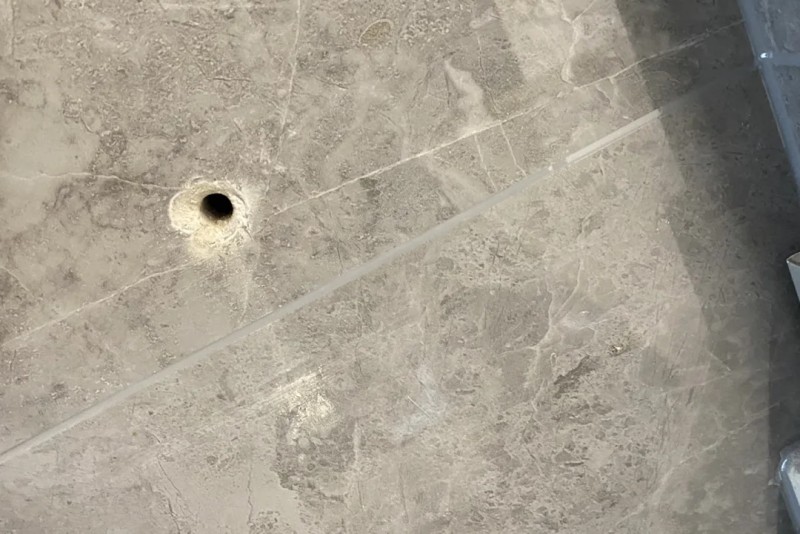
Tile Drilling Tips Revealed: How to Drill Tile Without Cracking?
Drilling holes in tile is a common task in home improvement, but it often brings up concerns about damaging the tile. Cracked and chipped tile can be frustrating and costly, but these problems are often caused by improper drilling technique. Fortunately, with the right method, you can drill holes accurately while ensuring that the tile remains intact. Here are some basic tips to help you drill holes in tile without causing damage.

1. Select Drilling Location
The first step to successful drilling is choosing the correct hole location.
Check for voids: Before you begin drilling, check the surface of the tile for voids or weak spots. Drilling in these areas may cause the tile to break or chip. If voids are found, drill in another location.
Avoid structural elements: Make sure the drilling location will not interfere with structural elements such as beams, columns, or hidden water and electrical wires. Use a stud finder or similar tool to confirm that there are no such elements behind the tile.
Prioritize tile joints: Whenever possible, drill holes in the joints between two tiles. This minimizes the risk of damaging individual tiles. If drilling in the joints is not possible, you can drill in the center of the tile, but avoid the edges, as this is where the tile is most likely to crack.
Mark location: Once you have determined the ideal drilling location, clearly mark it with a marker or pencil. This will help you maintain accuracy during the drilling process.
2. Choose the Right Drilling Tool
Choosing the right drilling tool is essential to creating clean, precise holes in tile.
Drill bit types: You may come across various types of drill bits, including impact drills, pistol drills, and electric hammers. However, not all drill bits are suitable for drilling tile. For best results, it is recommended to use a tile-specific drill bit or a glass drill bit rather than a concrete drill bit, as concrete drill bits may be too sharp for delicate tile surfaces.
Diamond drill bits: Among many options, diamond drill bits are the top choice for drilling tile. Designed for hard materials, these bits deliver a clean cut without cracking or chipping. The diamond coating allows for efficient drilling while minimizing heat build-up that can cause damage.
3. Control Drilling Speed
Controlling the speed of your drill bit is essential to making clean, precise holes in tile.
Start slowly: In the early stages of drilling, use a low speed. This allows the drill bit to gradually cut into the tile surface without causing cracks. Starting slowly is especially important when you first get to work with tile, as this helps prevent chipping of the glaze.
Gradually increase speed: Once the drill has penetrated the glaze, you can gradually increase the speed. This transition is critical to drilling through the tile efficiently without overheating the drill or the tile itself.
Use the correct drill setting: If you are using an impact drill, be sure to turn off the impact feature. Instead, set the drill to the flat drill gear. This setting allows for a smoother drilling experience, especially when grinding off glaze at low speeds.
Pre-drilling
If you need to drill deeper into the wall after drilling through the tile, consider pre-drilling with a rotary hammer and a slightly larger glass drill bit. This technique will help avoid cracking of the tile and ensure a smoother transition to the wall material.
4. Accurately Control the Size of Brick Holes
When drilling holes in tile, especially when using a glass drill bit, it is important to accurately control the size of the hole.
Create a starting point: Begin by tilting the drill bit and gently digging a small indentation as a starting point. This initial indentation helps guide the drill bit and prevent it from slipping.
Use a template to ensure accuracy: For more precise control, consider using a plate or tile strip with the appropriate hole diameter for positioning. First, make a shallow mark and then move it away before continuing to drill. It is recommended to make this initial hole slightly larger than the actual required diameter by 1.5-2 mm to ensure smooth operation.
Drilling large diameter holes: For situations where you need to drill larger holes, such as a smoke hole, first use a drill to create a circular mark on the tile. Then, change the drill to a tile drill and carefully drill a circle of holes around the mark. Finally, use the drill to drill deeper. This method is more convenient and efficient for larger holes.
5. Keep Watering to Cool Down
During the drilling process, the drill bit must be kept cool to prevent overheating and burning.
Watering tip: Get a plastic water bottle, fill it with clean water, and poke a small hole in the bottle cap. Squeeze the bottle while drilling to allow water to flow onto the drill bit, especially where it contacts the tile. This constant watering is especially important with all tile materials, which need to be constantly cool to maintain the integrity of the drill bit and tile.
6. Stabilizing Force
Maintaining a steady force is essential when performing drilling tasks.
Avoid excessive force: Do not apply too much pressure when drilling. Instead, let the drill do the work. Keeping the drill in a steady motion and avoiding side-to-side shaking will help prevent cracks and ensure a clean hole.
7. Unclog the Drill Bit
During the drilling process, it is very important to keep the drill bit free of debris.
Removal and cleaning: After drilling each hole, remove the drill bit and clean out any debris from the hollow portion. This step is especially important when drilling through fully tiled material, as blockages can cause overheating and damage.
8. Selection of Heavy Bolts
When installing tile, especially when heavy-duty bolts are required, it is important to choose the correct size.
Longer bolts: Choose bolts that are 3 cm longer than the original bolts for safety. This precaution helps avoid potential safety hazards caused by bolts that are too short, which may not provide adequate support.
9. Electrical Safety Cannot Be Ignored
Safety is always the top priority when operating power tools.
Wear Insulated Gloves: When using a drill bit, always wear insulated gloves for electrical safety. This simple step can help prevent accidents and injuries when working with electrical equipment.
-
Online service
-
Official wechat
account
-
QQ:40933769
-
E-mail:
sales@z-lion.com
Online service
Please feel free to give your inquiry in the form below. We will reply you in 24 hours.

